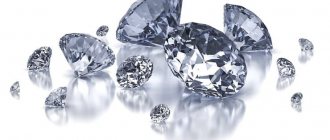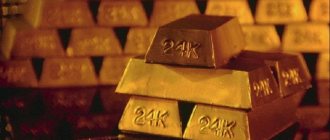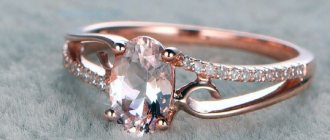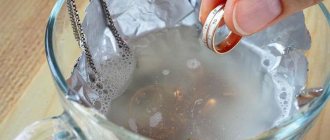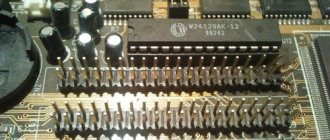Many gold buyers wonder why this precious metal is so expensive? But apart from gold's appearance, attractive color and beauty, it has many benefits from a chemical and physical point of view. For example, density, malleability, and the melting point of gold—these are the characteristics of the metal that are used in jewelry, industry, and medicine.
How gold is melted
Why is gold melted and mixed with less precious metals?
Gold is a hard, refractory metal that is often mixed with other metals such as copper, silver, iron, aluminum, and platinum. At the same time, it often changes color (it becomes white, brown, red). Purposes of alloys:
- Increased strength. Pure gold is easily deformed. Therefore, it is fused with stronger elements - this way you can get a harder material.
- Saving money. Pure gold is an extremely expensive metal. To save money, it can be fused with cheaper components - the price of the final product will be lower.
- Giving gold a unique color (pink, white, green, blue, purple and other alloys). Ligatures of various metals are responsible for the corresponding shade.
To mix metals, they need to be heated to a certain temperature at which it turns from solid to liquid (melting phenomenon). This indicator is called the melting point. If necessary, the material can be heated even after it has melted.
Once a certain temperature is reached, gold may begin to evaporate (this point is called the boiling point).
Gold bullion production process
A little history
Because gold could be found almost anywhere in the world, it became an essential element in almost all human cultures.
Starting with Ancient Egypt, where decorative gold objects dating back over 5,000 years have been found. Advertising - Continued below
The beauty of gold was associated by ancient people with immortality and the wealth of the gods, so jewelry and decorative elements were made from it. Gold was also one of the first currencies to replace traditional barter exchange.
Children's gold bracelet. Egypt. Approximately 2650 BC Photo: www.metmuseum.org
The very first gold coins were minted in the kingdom of Lydia in 550 BC, and since then this metal has remained the main element of the monetary system. Even after modern paper money was adopted, currencies remained linked through the Gold Standard, a system introduced in the 1870s that fixed the value of these currencies in a certain amount of gold.
Maximum melting temperature of gold: the higher the purity, the higher the degree
Fineness is the specific concentration of gold in the alloy. The most popular hallmarks are 999, 585 and 375. The number reflects the ratio of gold content per 1000 units of material. 1 kg of 999 fine contains 999 grams of gold, and the remaining 1 gram is impurities. The rule applies: the higher the sample, the higher the melting point.
- 375 gold melts and becomes liquid at a temperature of approximately 600-750 degrees.
- 585 gold product - at a temperature of about 700-850 degrees Celsius.
- The melting point of 999 gold is 1064 degrees Celsius. The boiling point of high-grade gold (999) is about 2700 degrees.
Important! If you are interested in the melting point in Kelvin, then add 273 to the numbers.
The melting point of gold depends on its purity
Main advantage
If you think that gold is valued for its beauty, you are a little mistaken. It turns out that the gold metal is valued for its unique flexibility. When gold is exposed to high temperatures, it takes on small forms, and at low temperatures, metal particles form a massive vein. The resulting veins can be seen with the naked eye.
Jeweler's work
Plus, gold is resistant to corrosion. There are cases where gold jewelry lay in the ground for decades, and after removal it remained in its original form, without changing color or shape. The precious yellow metal is resistant to chemicals and belongs to the noble category.
Comparative analysis of melting temperatures of gold of various samples
| Gold | Silver | Copper | Zinc | Cadmium | Melting temperature |
| 999 | Trace amount | Trace amount | Trace amount | Trace amount | 1064 |
| 585 | 138 | 229 | 36 | 12 | 850 |
| 585 | 163 | 207 | 46 | 850 | |
| 585 | 125 | 205 | 85 | 830 | |
| 585 | 160 | 205 | 30 | 20 | 820 |
| 585 | 150 | 205 | 30 | 30 | 800 |
| 585 | 193 | 133 | 33 | 56 | 790 |
| 585 | 100 | 225 | 90 | 770 | |
| 585 | 104 | 176 | 20 | 115 | 710 |
PHYSICAL PROPERTIES
| Mineral color | rich yellow, fading to white-yellow with a predominance of silver |
| Stroke color | brilliant yellow |
| Transparency | opaque |
| Shine | metal |
| Cleavage | No |
| Hardness (Mohs scale) | 2,5-3 |
| Strength | malleable |
| Kink | jagged |
| Density (measured) | 15 - 19.3 g/cm3 |
| Radioactivity (GRapi) | 0 |
| Magnetism | diamagnetic |
Stages of preparing gold for factory smelting
To produce gold bars, natural ore or nuggets are used, which undergo a procedure of mining, beneficiation and smelting. Most often, ore is smelted at factories using special furnaces after three-stage preparation:
- Mechanical cleaning of material. Strong water pressure is used to separate particles from soil and stones. Water may contain additional additives that improve the quality of cleaning.
- Refining-chemical cleaning (from impurities). Cleaned metal still contains particles of dust or other elements. To reduce their number, the material is washed with aqua regia.
- Deposition of a metal alloy. After cleaning with aqua regia, the material is placed in clean water, where the final purification of the material occurs. The particles sink to the bottom (due to their high density) - after settling, they are taken out and dried.
Melting gold in special melting furnaces
The gold particles are placed in a furnace where they are heated to the melting point. After reaching it, they take a liquid form and merge into the corresponding forms of an ingot or product (depending on the shape of the crucible) until they cool completely. Various furnaces can be used to melt material in factories:
- Gas. The crucible is placed inside the furnace, and a gas burner is supplied. During startup, the burner heats the crucible, which transfers heat to the gold particles.
- Induction. The crucible is supplied with electrical wires connected to a current source. When the circuit is completed, the electricity heats the mold and melts the material inside.
- Muffle. Electric heating elements are connected to the crucible from below and on the sides. They begin to heat up when the circuit is closed, which also leads to the melting of the material.
Gold smelting - technology
TOP 3 effective ways to melt gold at home
The main methods of melting gold products in factories were discussed above. However, there are craftsmen who have learned to transform this material at home. Practice shows that such smelting is “blacker” than factory smelting. If you follow the basic rules of remelting, you can obtain a completely pure alloy that will contain a minimum of impurities. Instructions on how to melt gold yourself:
What is the heating device made of?
If it is not possible to get professional equipment, you can melt gold using a gasoline burner. Before you start making it, you need to acquire the following:
- Airbrush spray. An air injector or garden equipment that sprays chemicals is quite suitable for this purpose.
- A jar. It is important that it has an airtight lid.
- Automotive air pump. A machine compressor is also suitable.
- With a hose.
- Sealant.
Equipment and materials for home metal smelting
The list of necessary equipment depends on the method of metal remelting:
- Melt using a burner. To carry out the work you will need a gas cylinder and a burner (autogen). It is recommended to melt gold on a refractory brick, which will not begin to crumble when heated. The crucible can be made from refractory clay. It is also recommended to use refractory tongs to place the material into the crucible.
- Melt using a melting furnace. Most melting furnaces sold in online stores are in the jewelry category. They are completely autonomous (the design contains its own crucible). Therefore, you will only need gold particles.
- Melt using a microwave. For melting, use a microwave oven with a power of 1200 watts or more. You will also need two bricks - two recesses should be made in them (the bricks are placed in the oven with the recesses facing each other to create free space). It is recommended to make the crucible from graphite (microwave radiation can melt the clay).
How to clean castings
After the borax has served its purpose and cleansed the molten gold of excess compounds, you will have to rid the ingot of the remnants of the borax itself. For final cleaning you will need:
- hydrochloric acid - 20 ml;
- nitric acid - 10 ml;
- distilled water - 0.5 l;
- fireproof flask;
- electric stove.
The casting must be boiled in an acid solution for 5 minutes and rinsed with clean water. This part of the experiment is best carried out outdoors, for example in a summer cottage: acid fumes are toxic.
Section question - answer
Melting point of 585 gold in degrees Celsius?
Expert opinion
Pribrezhny Gennady Valentinovich
Jeweler 6th category
It all depends on what alloying additives and in what quantities are included in the alloy in addition to gold. Typically, the melt temperature of 585 sample is in the range from 700 to 850 degrees.
Melting temperature of gold at home
Expert opinion
Grishanov Mikhail Petrovich
Jeweler, director of the Grishanov and Co. workshop
Everything depends primarily on the sample + you need to make a small addition on top, since higher heat losses are usually observed outside. 585 sample is recommended to be heated to 900 degrees, 999 to 1200 degrees, 375 to 800 degrees.
Does gold melt in a fire?
Expert opinion
Pribrezhny Gennady Valentinovich
Jeweler 6th category
It all depends on how exactly the building burns and what type of product is inside it. Typically, in a serious fire, the fire can heat the room to 900-1100 degrees. Samples 585 and 375 melt at this temperature, but, if you're lucky, the product 999 samples will remain unharmed.
Melting gold at home
Does gold melt in a fire?
Expert opinion
Grishanov Mikhail Petrovich
Jeweler, director of the Grishanov and Co. workshop
This is possible, although in practice it is rarely used due to high heat loss, as well as the risk of contamination of the product. A good fire is on coal. If heated with wood from the forest, melting will not occur.
At what temperature does gold melt at home, how to melt it?
Expert opinion
Pribrezhny Gennady Valentinovich
Jeweler 6th category
Heating should be carried out with a small margin. The optimal temperature for casting 585 is 900 degrees, 375 is 800 degrees, 999 is 1200 degrees. Use a stove or gas burner to heat. You can also melt using a microwave.
STRUCTURE
Crystal structure of gold
Crystallizes in the cubic system, in the form of octahedra, rhombic dodecahedrons, cubes and more complex crystals; Often they are distorted, strongly elongated, forming “wires”, “hairs”, or flattened parallel to the edge of the octahedron. Native gold, especially low-grade gold, is characterized by a variety of growth forms; it is usually in the form of skeletal crystals, dendrites, thread-like and twisted-filamentary crystals. Streak-like and irregular lump-like, “hooked” discharges are widespread; Their surfaces often contain imprints of crystals of other minerals, the aggregates of which included accumulations of native gold. Etching reveals the crystalline granular structure of the gold particles.
What determines the color of gold jewelry?
What color the jewelry produced will acquire depends on the type of components in the alloy and their percentage. A product in which gold and silver make up 25% respectively, and copper 50% will have a red tint. White color - if the alloy includes palladium, nickel, silver. Green - silver and copper. Pink - silver, palladium and copper.
Sources
- https://jgems.ru/metally/zoloto
- https://DedPodaril.com/zoloto/imform/temperatura-plavleniya-zolota.html
- https://k-tree.ru/tools/chemistry/periodic.php?element=Au
- https://tokar.guru/metally/temperatura-plavleniya/temperatura-plavleniya-i-kipeniya-zolota.html
- https://goldomania.ru/articles-3/temperatura_plavleniya_zolota.html
- https://golden-inform.ru/proby/temperatura-plavlenija-zolota/
- https://www.vseznaika.org/chemiks/chto-takoe-zoloto-i-za-chto-cenyat-etot-metall/
- https://vplate.ru/zoloto/plavleniye/
- https://TheMineral.ru/metally/zoloto
- https://zhazhdazolota.ru/interesnoe/temperatura-plavleniya-zolota
- https://zolotoigid.ru/temperatura-plavleniya
Melting gold on a homemade burner
Treat the crucible with flux (borax) and place pre-crushed scrap in it. Pour alcohol into it and set it on fire. Wait for the alcohol to burn off. And move the crucible to a fireproof surface.
Turn on the burner so that the middle of the flame is blue and the edges are yellow. Melting must take place over an open fire so that the alloy is completely burned out and the gold is melted. After this, pour the metal into the mold and harden it with water.
Back Next





